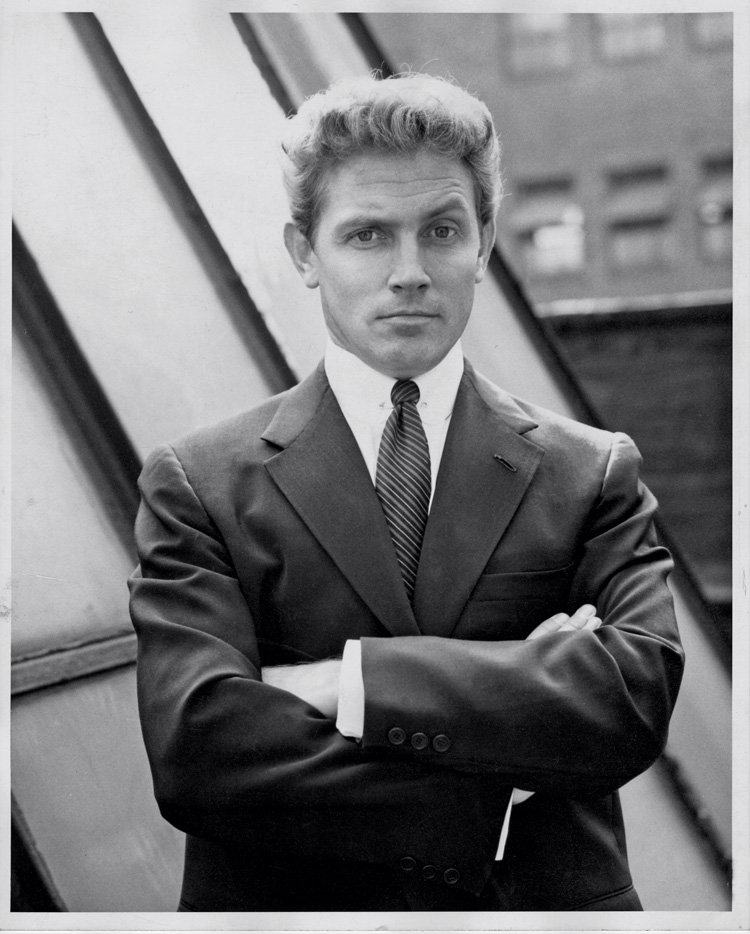A Texas Mid-Century Master
The Menil Drawing Institute adds 80 pieces by artist Gray Foy to its collection.

Gay artist Gray Foy was an American original. Born in Dallas in 1922 and educated at Southern Methodist University, he arrived in New York City in 1947, preternaturally handsome and fully in command of a mature artistic vision.
In 1948, the New York Herald Tribune praised Foy as “a superb craftsman, a young person who will someday be reckoned with in the field of modern art.” That same year, he met the man who would become his life partner of 50 years, Leo Lerman, a highly influential editor at Condé Nast for four decades.
Together, they built a golden life in the beau monde of mid-century Manhattan, cultivating a circle of friends from the artistic and cultural elite. Foy ran with such boldfaced names as Maria Callas, Marlene Dietrich, Jacqueline Kennedy Onassis, Truman Capote, George Balanchine, and Margot Fonteyn.
When Foy died at the age of 90 in 2012, an obituary in the New York Times hailed him as “an artist and avatar of a gilded age,” praising him as “a tastemaker, bon vivant, salonnier, partygoer, party-giver, genteel accumulator, and perennial fixture of New York cultural life.”
Now, a decade after his death, Houston’s Menil Drawing Institute is presenting a retrospective entitled Hyperreal: Gray Foy, part of an effort to introduce his arrestingly imaginative work to a wider audience. The exhibition features almost three dozen of his meticulous drawings and commercial art, tracing the arc of his career from the 1940s to the 1970s. It is the first solo museum exhibition for the artist, and it celebrates two major gifts of 80 pieces of Foy’s work, which will make the Menil Drawing Institute the largest repository of his art in the world. The exhibition is curated by Kirsten Marples, who spent 18 months immersing herself in the artist’s work.

Rebecca Rabinow, director of The Menil Collection, observed, “Gray Foy’s unusual talent caught the eye of some of the savviest drawings connoisseurs of the mid-20th century, but because Foy stopped working mid-career, he is not well known today.”
His work enjoyed powerful champions, including actor Steve Martin, who purchased Foy’s Dimensions and donated it to the Museum of Modern Art in New York City. An early large-scale work from 1945 and 1946, Dimensions exemplifies the astonishing detail and mesmerizing surrealistic vision that characterized much of Foy’s early oeuvre. (The Menil helpfully provides magnifying glasses to allow viewers to savor the minute details of Foy’s graphite-on-paper artistry.)
Of Dimensions, the esteemed art critic Robert Pincus-Witten observed, “The picture demonstrates what is most arresting about Foy’s talent—a skilled, hyper-obsessional observation of human figures or exfoliating flowers and fantastic particulars rendered as if he were transcribing them through a jeweler’s loupe. Such intense focus recalls the backgrounds of Northern Renaissance painting—Jan van Eyck, for example.”
Foy spent between ten and thirteen months creating Dimensions, and he often lavished that much time on his other graphite drawings. He might be paid $100 for a drawing, which made the economics of his artistic career a challenge.
A subtle undercurrent of homoeroticism runs through some of the works from this early period that are on display at The Menil, most notably in Untitled (Nudes Emerging from Botanical and Avian Forms) from 1948.

By the end of the 1940s, Foy had begun to distance himself from surrealism. “Please don’t put me down as a surrealist,” Foy told an interviewer in 1948. “I may turn out to be a realist. After all, hyper-realism actually becomes the supernatural.” This notion of transcending visible reality is a through line within Foy’s body of work.
Foy began to develop an ecological consciousness, frequently depicting flowers and vegetation. Of his work from this period, New York Times critic Stuart Preston observed, “Foy’s pencil and brush spin out a tissue of delicacy and transparency, light enough to seem to have settled on the paper like frost, strong enough to have netted in its gossamer texture enough visual data about the plant forms to astound a botanist.”
In 1961, he was awarded a prestigious John Simon Guggenheim fellowship, and took a year to create the large-scale watercolor and graphite on paper The Third Kingdom, also on display in the exhibition.
Art historian Pincus-Witten called these later pieces from the 1950s and ’60s “his best work.”
But even in his late drawings, subjects ostensibly drawn from the natural world, such as 1970’s Untitled (Botanical Globe with Emerging Life Forms), are imbued with a surreal mystery that lingers hauntingly in the viewer’s mind.
WHAT: Hyperreal: Gray Foy art exhibition
WHEN: Through September 3
WHERE: The Menil Drawing Institute, 1412 West Main St.











FB Comments